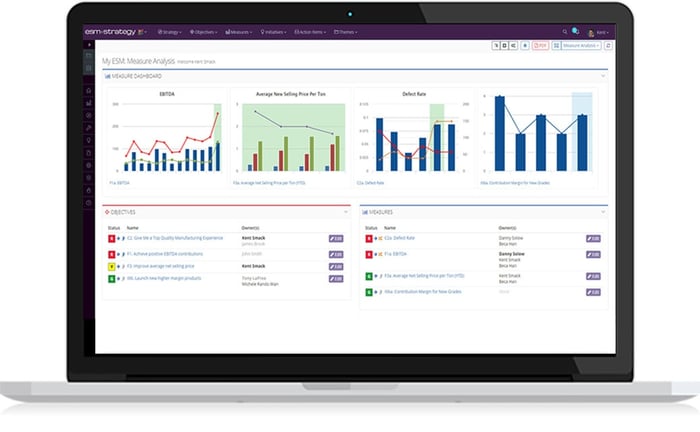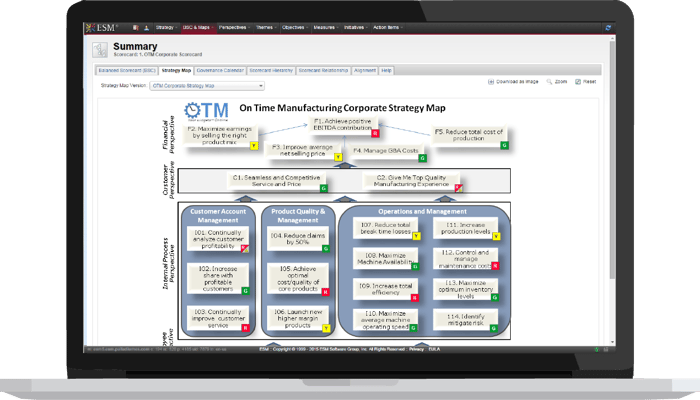It has been said, “you get what you measure”. If you don’t measure you don’t know whether you are achieving your objective. Likewise, if you don’t conduct strategy reviews “how do you know whether your strategy is working – it may become irrelevant”.
In the current environment change is rapidly becoming the norm not the exception. Strategy likewise needs to keep pace with the rapidly increasing pace of change. Change in this context can be imposed by external factors – e.g. competitors, changing customer taste, increase or decrease in legislation – or by internal factors – such as technology implementation, or employee behaviors (millennial’s value shift). Where once strategy could be managed in 3 to 5 year increments, today it must adapt more rapidly to maintain or sustain a competitive advantage.
Strategy has become a “Continuous Learning and Adapting Process”.
Strategy review at the speed of relevance, is the way many have addressed the new strategy management process. Some have even omitted the term “Strategic Planning” (with it assumption that strategy can be relatively consistent over time) with a new term “Strategy Management” recognizing that “things change” and the organization “must change”.
There is, therefore, a need to revisit the Strategic Planning Process. Where it may have been appropriate to review strategy once a year to record changes and adapt, today we are held to a much more frequent drum beat. Let me provide an outline for Strategy Review and then fill in the steps with more details.
Strategic Plan Development: Assuming there is a comprehensive Strategy Formulation Process covering a multi-year time horizon, that sets out the strategic foundation (Mission, Values and Vision) for the organization. And then articulates the strategic priorities (objectives), sets required performance indicators and levels (measures and targets) and identifies, funds and implements intervention programs to close the performance gap (initiatives) you have a strategic plan.
Execution of the Strategic Plan: This process begins with Leadership. The organization Leader (CEO at the Corporate Level or General Manager at the Unit Level) must own the process of strategy execution. It is there responsibility to ensure the implementation of strategy is part of their everyday job.
To ensure that strategy execution is done and done properly, leaders need to put in place a Strategy Review Process that keeps the implementation of strategy an ongoing topic of discussion. To this end, a governance system including assignment of responsibilities and a “drum beat” of regularly scheduled leadership meeting is critical.
One of the best ways to ensure that strategy is implemented is for the Leader to assign accountability for strategic monitoring and evaluation. This accountability has been described as “ownership through stewardship” where executive team members are given the accountability to monitor and report on strategic progress – Objectives, Measures, Targets and Initiatives assigned to them. They may not be the project managers of the Initiatives, but they are accountable for reporting the progress of the Initiative to their peers on the Leadership Team.

The “drum beat” of regularly scheduled Strategy Review Meetings is where the strategy is discussed. The performance of its key priorities is reviewed; strategic learning takes place; and, the strategy adapts to the challenges it faces. The Strategy Meeting Agenda is adjusted to meet the organization’s unique pace of change – in fast and ever-changing industries i.e. consumer products, it will tend to change faster than in a process industry such as Utilities or Petro Chemicals. The Strategy Review Meeting must align with the organizations environment with some needing to meet Monthly and others meeting Quarterly. The question to be answered is “how often do we need to meet to manage the changing external and internal environmental challenges?”
The next level of strategic management involves the “what” is the focus of the strategy meeting agenda and “when” is it presented. Observed practice suggests that the “what” involves the Objectives on the Strategy Map with associated Measures/Targets/Initiatives. The “when” is sometimes defined as when the performance is not performing as planned – in Balanced Scorecard Terms – when the objective’s performance is evaluated as “Yellow” – off target or trending off target or “Red” – off target substantially and trending down.

“When” are these reviews held? It occurs when the performance is far below target or when the performance is forecasted to be far below expected performance levels. Sometimes this is described as exception reporting. This can occur at the regularly scheduled Strategy Review Meeting or if needed, at a special leadership review meeting. The general rule is the review is done commensurate with the implementation risk. Don’t wait if the risk presents an clear and present danger!
There is another case where that would demand a leadership attention. This is where there is clear evidence that the assumed causal effect between objectives is not seen. Remember that the Balanced Scorecard is made up of a series of objectives linked in a causal effect logic – you hire the people, to do the work, to deliver to customers a product or service, which has financial impact for the organization. When this correlation is not evident, it is time to check the underlying assumptions in the model. The reasons for this can vary – your assumptions were wrong, the performance levels were not set correctly, or there are other unplanned factors (internal or external to the organization) that are impacting performance. When the evidence points to the flaw in the logic, it is time to reconvene and reassess.
Therefore, in the Balanced Scorecard Strategy Implementation Practice you measure two things: whether you are doing what you said you need to do – variance reporting and whether you are doing the right things – causation / correlation. Both are appropriate topics for the Strategy Review Meeting. Too often we do the variance reporting and fail to check the underlying causal relationships.
To optimize the BSC Strategy Implementation Process we need to keep in mind a few critical points:
- You get what you measure – so measure the right things
- Strategy is a hypothesis – that needs to be tested
- Leadership is the critical success factor – the Leader owns the strategy
- Ownership through Stewardship - keeps the Leadership Team involved
- The Strategy Review Meeting – is the forum for review, learning and adapting
By following these 5 simple rules, you can ensure your strategy is well managed and can change with the times.








